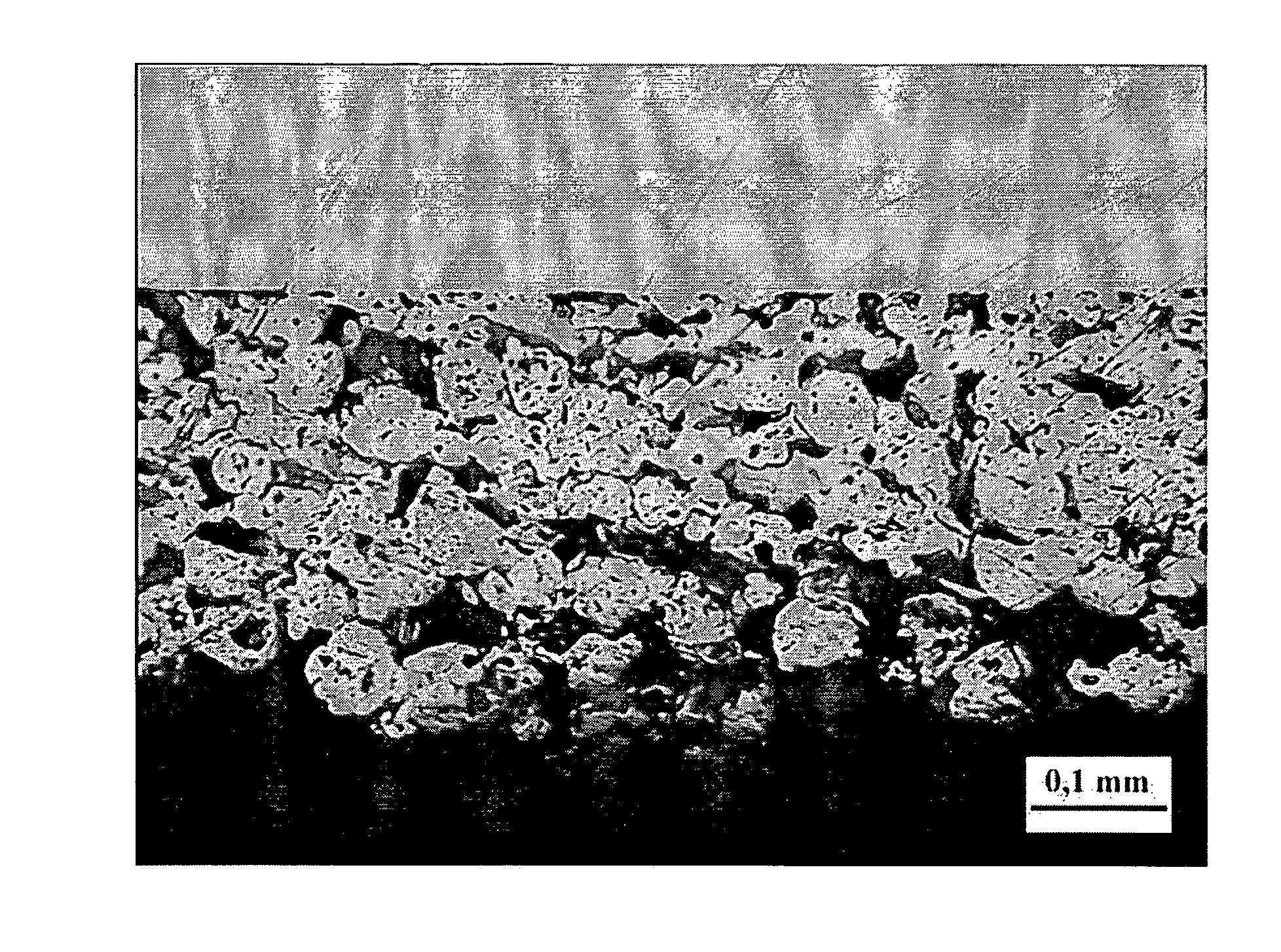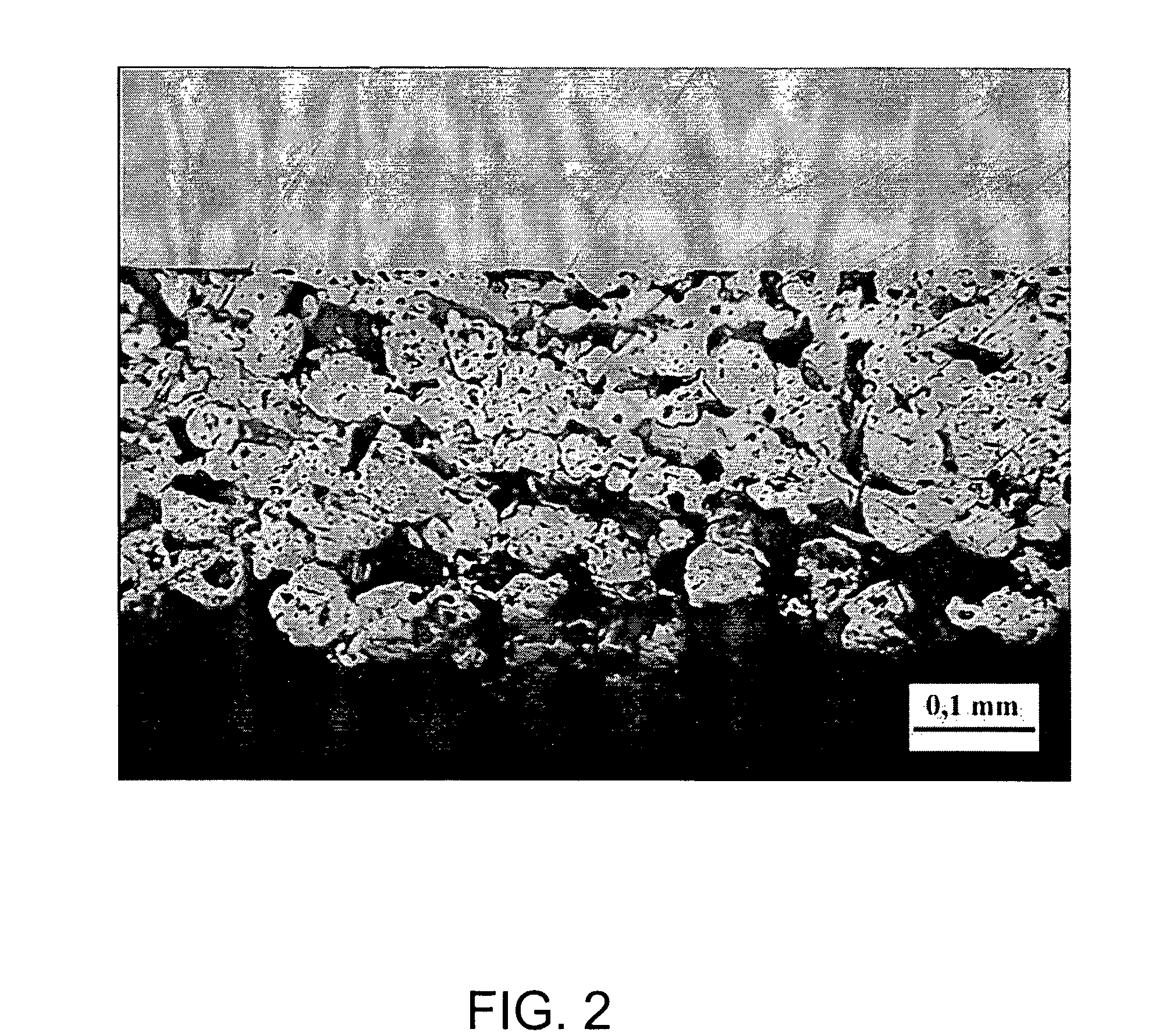Method For Reducing Metal Oxide Powder And Attaching It To A Heat Transfer Surface And The Heat Transfer Surface
a technology of metal oxide powder and heat transfer surface, which is applied in the direction of conductive materials, non-conductive materials with dispersed conductive materials, conductive materials, etc., can solve the problems of long heating time and high heating temperature required for industrial application, and achieve the effect of reducing investment costs and clear energy saving
- Summary
- Abstract
- Description
- Claims
- Application Information
AI Technical Summary
Benefits of technology
Problems solved by technology
Method used
Image
Examples
example 1
[0030] Deoxidised high phosphorous copper strip (Cu-DHP) was used as the heat transfer surface. The cuprous oxide powder was hydrometallurgically prepared powder and the brazing solder used was a powder with the following composition: 3.9-4.5 weight % Ni, 14.6-16.6 weight % Sn, 5.0-5.5 weight % P with the remainder copper. Both powders were mixed with a commercial organic binder, whereby a powder paste was formed. The composition of the paste in percentage by weight was 77% cuprous oxide powder, 18% binder and 5% brazing powder.
[0031] The paste was sprayed onto the surface of the copper strip. The thickness of the sprayed coating layer was approximately 100 μm. The strip was conveyed through a resistance furnace acting as a drying and brazing furnace at a rate of 10 cm / min. The temperature of the binder drying and evaporation furnace was approximately 300° C. and that of the reduction-brazing furnace about 620° C. Nitrogen atmosphere was used as shielding gas, which included some h...
PUM
| Property | Measurement | Unit |
|---|---|---|
| Temperature | aaaaa | aaaaa |
| Temperature | aaaaa | aaaaa |
| Temperature | aaaaa | aaaaa |
Abstract
Description
Claims
Application Information
 Login to View More
Login to View More - R&D
- Intellectual Property
- Life Sciences
- Materials
- Tech Scout
- Unparalleled Data Quality
- Higher Quality Content
- 60% Fewer Hallucinations
Browse by: Latest US Patents, China's latest patents, Technical Efficacy Thesaurus, Application Domain, Technology Topic, Popular Technical Reports.
© 2025 PatSnap. All rights reserved.Legal|Privacy policy|Modern Slavery Act Transparency Statement|Sitemap|About US| Contact US: help@patsnap.com



